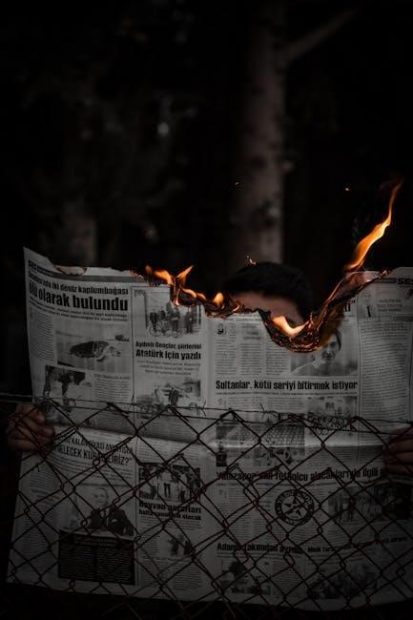This anthology explores power dynamics and conflict through poems like Ozymandias, London, and Exposure, highlighting human suffering and war’s reality, offering deep insights into universal themes.
1.1 Overview of the Anthology
The Power and Conflict anthology is a thought-provoking collection of poems that delve into themes of authority, struggle, and human resilience. Featuring works by poets such as Percy Bysshe Shelley, William Blake, Wilfred Owen, Simon Armitage, and Jane Weir, the anthology examines the complexities of power dynamics and the profound effects of conflict. Poems like Ozymandias, London, and Exposure highlight the consequences of war, societal oppression, and personal loss. The anthology is widely used in educational settings, particularly for AQA exams, to explore these universal themes through literary analysis and critical thinking.
1.2 Importance of the Theme “Power and Conflict”
The theme of “Power and Conflict” is universally relevant, exploring how authority shapes human experiences and the devastating consequences of struggle. Through poems like Ozymandias and Exposure, the anthology reveals the fragility of power and the emotional toll of conflict on individuals and society. This theme encourages critical thinking about historical and contemporary issues, making it a vital area of study. By examining these dynamics, readers gain insights into the complexities of human nature, fostering empathy and understanding. The anthology’s focus on this theme underscores its enduring significance in literature and education.
1.3 Structure of the Anthology
The anthology is organized into sections, each focusing on specific aspects of power and conflict. It includes poems like Ozymandias, London, and Exposure, which explore themes such as human power vs. nature, war’s reality, and loss. The structure allows for a gradual exploration of these themes, with each poem offering unique perspectives. Annotations and analysis accompany the poems, providing deeper insights. This organization enables readers to engage with the material systematically, fostering a comprehensive understanding of the anthology’s central themes and their relevance to both historical and contemporary contexts.
Key Themes in the Anthology

The anthology delves into themes of power, conflict, suffering, and the reality of war, exploring human struggles and the enduring impact of loss and memory.
2.1 The Power of Humans vs. the Power of Nature
The anthology contrasts human ambition with nature’s enduring dominance. Shelley’s Ozymandias portrays human pride crumbling against time, while Blake’s London highlights urban oppression. Owen’s Exposure reveals nature’s indifference to human suffering, emphasizing the futility of conflict. These poems underscore the limits of human control, showing how nature’s power prevails, offering a poignant reflection on humanity’s place within the natural world.
2.2 Effects of Conflict on Individuals and Society
The anthology examines how conflict devastates individuals and societies. Poems like Remains and Poppies depict personal loss and emotional trauma, while London highlights systemic oppression. Exposure reveals the psychological toll of war on soldiers, emphasizing the human cost of conflict. These works illustrate how power imbalances and violence disrupt lives, fostering inequality and social unrest. The anthology underscores the enduring impact of conflict, urging reflection on its consequences for both individuals and collective humanity, offering a powerful commentary on the fragility of peace and the resilience of the human spirit in the face of adversity.
2.3 Reality of War and Its Impact
The anthology vividly portrays the harsh realities of war through poems like Exposure and Remains. These works emphasize the brutal conditions soldiers endure, such as extreme weather and constant danger, while also exploring the emotional and psychological toll. The futility of war is a recurring theme, as seen in the contrast between the glory promised and the grim reality experienced. The impact extends beyond the battlefield, affecting families and society, leaving lasting scars. The poems offer a haunting reminder of war’s devastating consequences, urging readers to reflect on its true cost and the enduring suffering it inflicts on humanity.
2.4 Loss, Absence, and Memory
The anthology delves into the profound themes of loss, absence, and memory, particularly through poems like Remains and Poppies. These works evoke the emotional toll of conflict, where the absence of loved ones leaves a void that cannot be filled. Memory serves as both a comfort and a burden, as individuals and societies grapple with the legacies of war and suffering. The poems use haunting imagery and symbolism to convey the enduring impact of loss, emphasizing how memories of the past shape the present and future. This theme resonates deeply, inviting readers to reflect on the human cost of conflict and its lasting scars.

Poems Included in the Anthology
The anthology features Ozymandias by Percy Bysshe Shelley, London by William Blake, Exposure by Wilfred Owen, Remains by Simon Armitage, and Poppies by Jane Weir.
3.1 “Ozymandias” by Percy Bysshe Shelley

Ozymandias by Percy Bysshe Shelley is a sonnet that reflects on the fleeting nature of power and human ambition. The poem describes a shattered statue of a once-mighty king, Ozymandias, with the inscription “My name is Ozymandias, King of Kings; Look on my Works, ye Mighty, and despair!” The desolate landscape surrounding the ruins contrasts with the arrogance of the king’s claim, highlighting the inevitable decline of all human achievements. Shelley uses imagery and symbolism to critique the hubris of power and the transience of glory, making it a cornerstone of the anthology’s exploration of power and conflict.
3.2 “London” by William Blake
William Blake’s London is a poignant critique of social oppression and despair in late 18th-century England. The poem vividly portrays the suffering of the city’s inhabitants, from the “weak and weary” to the “youthful harlot” and the “soldier’s sigh.” Blake uses imagery and repetition to emphasize the pervasive nature of exploitation and despair, with “mind-forg’d manacles” symbolizing the mental and emotional chains imposed by society. The poem’s somber tone reflects Blake’s outrage at the injustices of his time, making it a powerful exploration of power and conflict in the anthology.
3.3 “Exposure” by Wilfred Owen
Wilfred Owen’s Exposure vividly captures the harsh realities of World War I, focusing on soldiers enduring the elements rather than enemy fire. The poem conveys the physical and mental toll of prolonged exposure to nature’s brutality, with imagery of biting winds and icy conditions. Owen’s stark portrayal highlights the soldiers’ vulnerability, contrasting the romanticized notion of war with its grim reality. The tragic tone and vivid descriptions emphasize the dehumanizing effects of conflict, making Exposure a powerful critique of war’s true nature and its impact on those who endure it.
3.4 “Remains” by Simon Armitage
Simon Armitage’s Remains delves into the aftermath of war, focusing on the physical and emotional remnants left behind. The poem explores themes of loss, absence, and memory, evoking a tragic tone through vivid imagery. Armitage examines the dehumanizing effects of conflict, where soldiers’ remains are reduced to mere objects. The poem’s haunting narrative underscores the enduring impact of war on individuals and society, offering a poignant reflection on the human cost of conflict. Its inclusion in the anthology highlights the lasting scars of power struggles and violence, resonating deeply with readers.
3.5 “Poppies” by Jane Weir
Jane Weir’s Poppies is a haunting exploration of war’s legacy, using the poppy as a symbol of remembrance and loss. The poem delves into the emotional toll of conflict on individuals and families, capturing the enduring impact of violence. Weir’s vivid imagery and evocative language convey a sense of tragedy and longing, while the poppy serves as a poignant reminder of sacrifice. The poem’s tone is deeply reflective, inviting readers to contemplate the human cost of power struggles and the lasting scars left by conflict. Its inclusion in the anthology underscores the timeless relevance of these themes.

Analysis of Poems
The anthology’s poems are analyzed for their exploration of power and conflict, examining themes, literary devices, and emotional depth to uncover their universal relevance and impact.
4.1 Themes of Power and Conflict in “Ozymandias”
In “Ozymandias,” Shelley explores the transient nature of power and the inevitability of decline. The shattered statue of the once-mighty king symbolizes the futility of human ambition. The inscription, “My name is Ozymandias, King of Kings,” contrasts with the desolate landscape, highlighting the illusion of enduring power. The poem underscores the conflict between human pride and the unstoppable forces of nature and time. Shelley’s masterpiece serves as a cautionary tale, reminding us that even the greatest civilizations will crumble, leaving only remnants of their former glory. This theme resonates universally, challenging readers to reflect on the impermanence of power.
4.2 The Representation of Conflict in “London”
William Blake’s “London” vividly portrays the city’s social and emotional turmoil, highlighting the plight of its oppressed inhabitants. The poem captures the cries of the “hapless soldier” and the “youthful harlot,” illustrating the human cost of systemic injustice. Blake’s imagery of “mind-forged manacles” symbolizes the mental and emotional shackles imposed by societal structures. The poem’s somber tone reflects the pervasive despair and hopelessness, emphasizing the conflict between the individual and oppressive institutions. Through these powerful depictions, Blake critiques the exploitation and suffering embedded in London’s fabric, offering a poignant commentary on power and its impact on the vulnerable.
4.3 The Reality of War in “Exposure”
Wilfred Owen’s “Exposure” starkly portrays the harsh realities of war, focusing on the physical and emotional toll on soldiers. The poem vividly describes the freezing cold, the relentless wind, and the desolate landscape, emphasizing the soldiers’ vulnerability. Owen’s imagery, such as “merciless ices” and “twitching muscles,” underscores the brutal conditions endured during World War I. The poem also conveys the psychological strain, as soldiers confront the futility of their situation. Through its haunting tone and vivid descriptions, “Exposure” offers a raw, unfiltered depiction of war’s horrors, highlighting the human cost and the devastating impact on those involved.
4.4 The Tragic Tone in “Remains”
Simon Armitage’s “Remains” evokes a profound sense of tragedy through its depiction of a soldier’s emotional and physical burden. The poem captures the harrowing reality of war, focusing on the soldier’s duty to return a comrade’s remains. The tone is somber and reflective, emphasizing the futility of conflict and the lasting impact on individuals. Armitage’s vivid imagery, such as the “broken circle” of the soldier’s life, underscores the irreversible loss and grief. The tragic tone resonates deeply, highlighting the human cost of war and the enduring scars it leaves on those who survive.
4.5 The Haunting Nature of “Poppies”
Jane Weir’s “Poppies” captivates with its haunting portrayal of loss and memory, weaving a tragic narrative through vivid imagery. The poem’s central symbol, the poppy, embodies both beauty and sorrow, reflecting the devastating impact of war. Weir’s use of evocative language creates a somber tone, evoking feelings of nostalgia and regret. The poem’s focus on personal and collective grief resonates deeply, highlighting the enduring scars of conflict. Its haunting nature lies in its ability to balance the fragility of life with the permanence of memory, leaving readers with a profound sense of melancholy and reflection.
Historical Context of the Poems
The anthology’s poems reflect historical contexts, from Shelley’s ancient ruins to Owen’s WWI trenches, Armitage’s modern warfare, and Weir’s contemporary reflections on conflict and memory.
5.1 Historical Background of “Ozymandias”
Ozymandias, written by Percy Bysshe Shelley in 1818, reflects the decline of empires and the transience of power. Inspired by the fall of ancient civilizations, the poem critiques hubris and tyranny. Shelley’s work was influenced by the discovery of a shattered statue of Ramses II, symbolizing the inevitable decay of human achievements. The poem’s historical context underscores the futility of power and the passage of time, resonating with the anthology’s themes of conflict and the fleeting nature of human dominance. Its timeless message aligns with the anthology’s exploration of power’s consequences.
5.2 The Context of “London” in Blake’s Time
William Blake’s London, written in 1794, reflects the social and political turmoil of his era. It critiques the exploitation and suffering of the working class, soldiers, and children during the Industrial Revolution. Blake’s poem highlights the stark contrast between wealth and poverty, as well as the oppressive systems of power. The French Revolution’s influence is evident in his calls for freedom and justice. Blake’s vivid imagery and emotional tone convey the despair and hopelessness of marginalized groups, offering a powerful commentary on the human cost of unchecked power and conflict in his time.
5.3 World War I and “Exposure”
Wilfred Owen’s Exposure vividly captures the harsh realities of World War I, focusing on soldiers enduring the cold and psychological strain in the trenches. Written during the war, the poem reflects the futility and horror of conflict, emphasizing the soldiers’ vulnerability to nature and the lack of action. Owen’s imagery and tone convey the tragic and haunting nature of war, aligning with the anthology’s themes of power and conflict. The poem serves as a powerful critique of war’s impact on individuals, highlighting the human cost and emotional toll of prolonged exposure to such conditions.
5.4 Modern Warfare in “Remains”
Simon Armitage’s Remains delves into the aftermath of modern warfare, exploring themes of loss and absence. The poem reflects on the emotional and psychological toll of conflict, emphasizing the tragic consequences of war. Through vivid imagery and a haunting tone, Armitage portrays the reality of modern combat, where the absence of fallen soldiers leaves a profound impact on individuals and society. The poem aligns with the anthology’s focus on power and conflict, offering a contemporary perspective on the enduring effects of warfare. Its exploration of memory and absence underscores the human cost of modern military engagements.
5.5 The Significance of “Poppies” in Contemporary Society
Jane Weir’s Poppies holds profound relevance in today’s society, as it evokes reflections on war, loss, and remembrance. The poem’s haunting imagery and tragic tone resonate with contemporary audiences, addressing the enduring impact of conflict. The poppy, a universal symbol of remembrance, serves as a poignant reminder of past and present wars. Weir’s exploration of memory and absence aligns with modern discussions on the human cost of warfare. The poem’s ability to evoke empathy and dialogue about conflict makes it a vital piece in fostering understanding of power dynamics and their consequences in society.

Literary Devices Used in the Anthology
The anthology employs imagery, symbolism, metaphor, and tone to convey themes of power and conflict, creating vivid portrayals of human struggles and societal issues effectively.
6.1 Imagery and Symbolism in the Poems

The anthology utilizes vivid imagery and symbolism to explore themes of power and conflict. In Ozymandias, Shelley employs the shattered statue as a symbol of decayed power, while Blake’s London paints a bleak picture of oppression through dark, urban imagery. Owen’s Exposure uses chilling descriptions of nature to highlight the harsh realities of war. Armitage’s Remains symbolizes loss through the imagery of a returned soldier’s belongings. Weir’s Poppies uses the flower as a haunting symbol of remembrance. These devices create powerful visual and emotional connections, enhancing the exploration of human struggle and societal conflict.
6.2 Use of Metaphor and Simile
Metaphors and similes in the anthology deepen the exploration of power and conflict. In Ozymandias, Shelley compares the statue’s decay to a once-mighty empire, symbolizing the transience of power. Blake’s London uses metaphors like “mind-forged manacles” to depict societal oppression. Owen’s Exposure employs similes to liken the cold to a relentless predator, emphasizing war’s brutality. Armitage’s Remains uses metaphors of absence to convey loss, while Weir’s Poppies compares memories to haunting flowers. These literary devices enhance the emotional and thematic depth, making the poems resonate with universal human experiences of struggle and resilience.
6.3 The Role of Tone and Mood
The anthology employs tone and mood to evoke powerful emotions, reflecting the themes of power and conflict. Poems like Ozymandias use a reflective tone to convey the decline of power, creating a somber mood. London adopts an angry tone, highlighting societal oppression and evoking tension. Exposure features a somber tone, mirroring the harsh realities of war, while Remains uses a tragic tone to express loss. Poppies employs a haunting tone, reflecting on memory and absence. These tonal choices enhance the emotional depth, immersing readers in the complexities of conflict and its enduring impact on humanity.
6.4 Alliteration and Rhythm
Alliteration and rhythm in the anthology enhance the emotional and thematic depth of the poems. In Ozymandias, Shelley’s use of alliteration emphasizes the decay of power, while London employs rhythm to mirror the oppressive atmosphere. Exposure features harsh, staccato rhythms to reflect the brutality of war, contrasting with the haunting, repetitive rhythm in Poppies. Remains uses subtle alliteration to underscore the tragic tone. These devices create vivid imagery and immerse readers in the poems’ emotional landscapes, amplifying the themes of power, conflict, and human suffering. Rhythm and alliteration are essential in conveying the anthology’s profound messages.

Comparative Analysis of Poems
The anthology’s poems offer contrasting yet complementary perspectives on power and conflict, from timeless themes in Ozymandias to modern warfare in Remains, creating a rich dialogue.
7.1 Comparing “Ozymandias” and “London”
Both poems critique power and its impact, but their approaches differ. Shelley’s Ozymandias explores the decline of a mighty ruler, emphasizing the transience of power, while Blake’s London portrays systemic oppression and human suffering. Shelley uses imagery of ruins to symbolize the fall of empires, whereas Blake employs a melancholic tone to highlight urban despair. Both poems challenge the notion of absolute power, but Ozymandias focuses on historical decay, and London on contemporary social injustice. Their contrasting styles yet shared themes create a powerful dialogue on power’s consequences across time and space.
7.2 “Exposure” vs. “Remains”: Similarities and Differences
Both “Exposure” and “Remains” delve into the harsh realities of war, yet their approaches differ. Owen’s Exposure vividly portrays the brutal conditions of World War I, focusing on the physical and emotional toll on soldiers. Armitage’s Remains explores modern warfare, emphasizing personal loss and the aftermath of conflict. While both poems critique the brutality of war, Owen’s tone is more intense and chaotic, whereas Armitage’s is reflective and haunting. Both highlight the human cost of conflict but through distinct lenses, offering a powerful contrast between historical and contemporary perspectives on war’s devastating impact.
7.3 The Contrast Between “Poppies” and Other War Poems

Jane Weir’s Poppies stands out for its intimate, personal portrayal of grief and memory, contrasting with the overt brutality in poems like Exposure and Remains. While Owen and Armitage focus on the physical and emotional toll of war, Weir’s poem delves into the lingering absence and haunting memories of loss. The poppy, a symbol of remembrance, evokes a quiet, reflective tone, unlike the chaotic intensity of other war poems. This contrast highlights the anthology’s range, offering both the immediacy of conflict and the enduring, personal impact of war on individuals and their loved ones.

The Anthology’s Relevance Today
The anthology remains relevant today, offering insights into power and conflict through timeless themes, making it a valuable educational resource for modern audiences.
8.1 Modern Interpretations of Power and Conflict
The anthology’s exploration of power and conflict remains highly relevant today, offering timeless themes that resonate with contemporary issues. Modern readers can draw parallels between historical and current events, such as political struggles, social inequalities, and the enduring impact of war. The poems’ emotional depth and universal themes allow for fresh interpretations, making them a valuable tool for understanding modern power dynamics. The anthology’s focus on human suffering and resilience continues to inspire new generations, providing a lens through which to view today’s conflicts and societal challenges.
8.2 The Anthology’s Role in Education
The Power and Conflict anthology plays a vital role in education, particularly in literature studies, by providing students with a rich collection of poems that explore complex themes. It aids in developing critical thinking and analytical skills through the examination of historical and contemporary issues. The anthology is widely used in classrooms to teach themes like power dynamics, war, and human suffering, offering diverse perspectives. Its inclusion in curricula helps students engage with poetry deeply, fostering empathy and understanding. Additionally, it prepares students for exams by exposing them to a variety of poetic styles and techniques, enhancing their literary analysis abilities.
8.3 Its Influence on Contemporary Literature
The Power and Conflict anthology has significantly influenced contemporary literature by inspiring modern poets and writers to explore themes of power, conflict, and human resilience. Its focus on the emotional and psychological impacts of war and societal struggles has set a precedent for authentic and evocative storytelling. Many contemporary works now incorporate similar techniques, such as vivid imagery and haunting tones, to convey profound messages. The anthology’s ability to connect historical events with universal human experiences continues to resonate, making it a foundational text for understanding and creating impactful literature in today’s world.
Conclusion
The Power and Conflict anthology remains a powerful exploration of human resilience, offering timeless insights into the complexities of power and its emotional impact on individuals and society.
9.1 Summary of Key Points
The Power and Conflict anthology delves into themes of power, human resilience, and the devastating effects of conflict. Poems like Ozymandias and London critique power structures, while Exposure and Remains portray war’s brutality. Poppies reflects on memory and loss, emphasizing the emotional toll of conflict. The anthology spans historical contexts, from ancient civilizations to modern warfare, offering a nuanced exploration of human suffering. Its relevance in education highlights the enduring importance of these themes, providing students with a lens to understand power dynamics and their impact on individuals and society.
9.2 Final Thoughts on the Anthology’s Significance
The Power and Conflict anthology remains a vital resource for exploring themes of authority, resilience, and human cost. Its poems, spanning historical to modern contexts, offer profound insights into societal struggles. Educators and students benefit from its structured analysis, fostering critical thinking about power dynamics. The anthology’s influence extends to contemporary literature, inspiring new perspectives on conflict and memory. Its enduring relevance ensures it continues to resonate, providing a meaningful framework for understanding the complexities of human experience and the lasting impact of power and conflict across generations.
